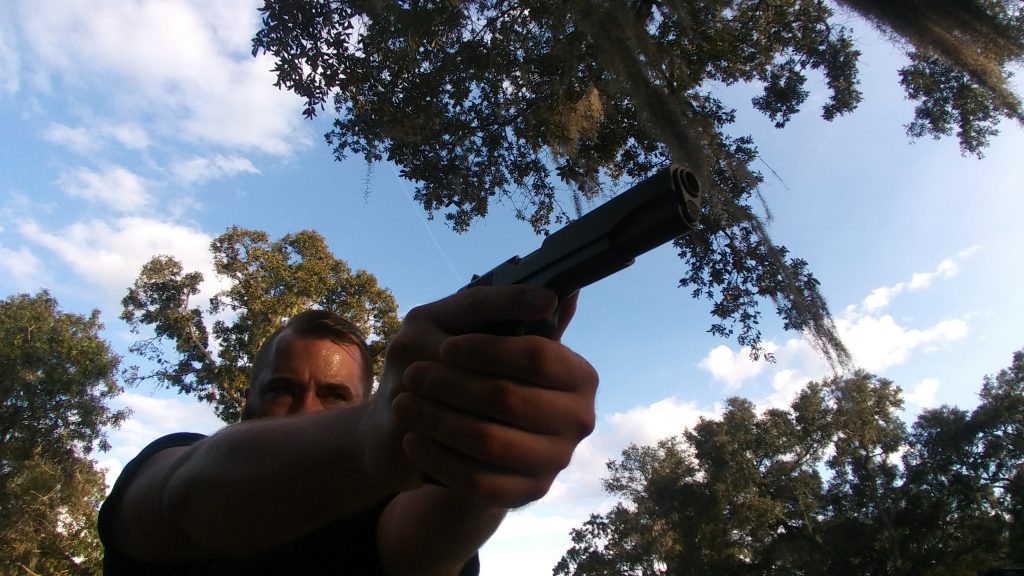It’s interesting how you conform your body affects how you can control your pistol. It’s not too much of a surprise, it the same as martial arts and combat sports. A good stance can make a world of difference. There are a variety of stances in the shooting world for each platform with three main stances in the handgun shooting realm. Naturally, each has its pros and cons.
As a humble student of the gun, I’m not arrogant enough to say one is better than the other, but I do recognize the strengths of each. Aside from your normal shooting stances, here are two special situation stances that I believe should be in every shooter’s arsenal.
The Weaver Stance
The Weaver was created by police officer Jack Weaver and was the first mainstream two-handed handgun shooting stance. As far as shooting stances go many find this one to be outdated. However, some reputable schools still teach it. The Weaver Stance is very comfortable and relaxed in a lot of ways. The handgun is held somewhat close to the face and this helps the user keep the gun away from potential opponents. It also makes it easier to find the front sight.
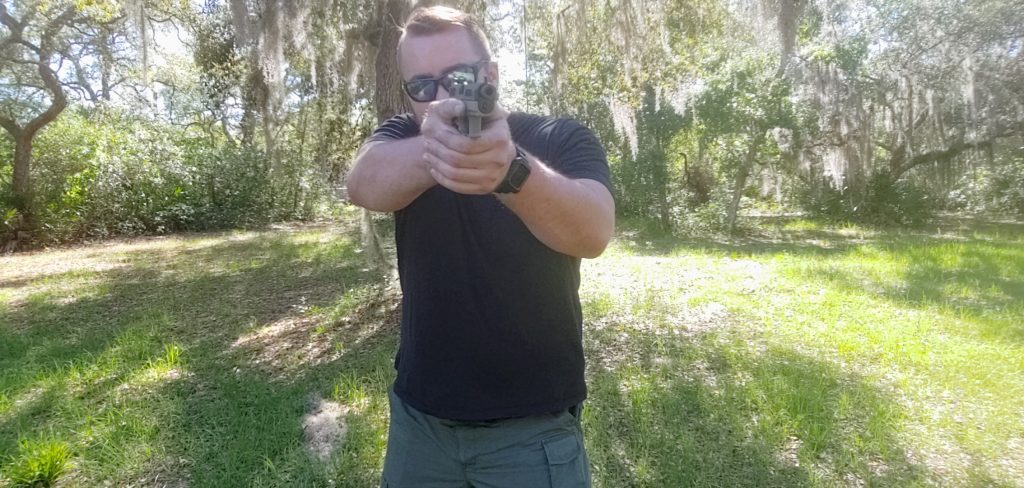
The Weaver Stance has your non-dominant leg forward, like a boxing stance, with the rear leg being used for support. There is a slight lean at the waist. The arms are extended, but not locked fully out. The dominant hand is pushing forward while the support hand is pulling rearwards.
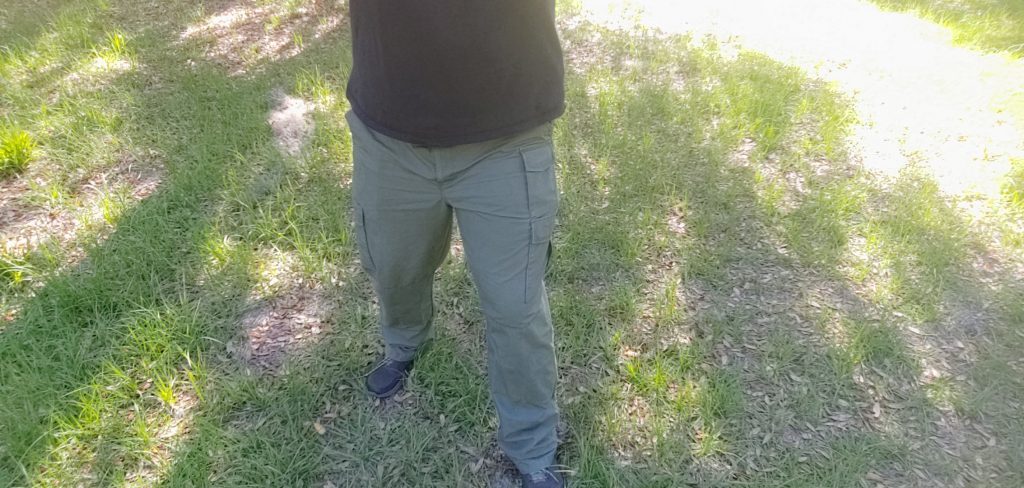
Pros
- Very comfortable and easy to maintain for extended periods of time
- By blading your body you are producing less of a target
- Very stable with staggered feet
- Quick and easy to learn
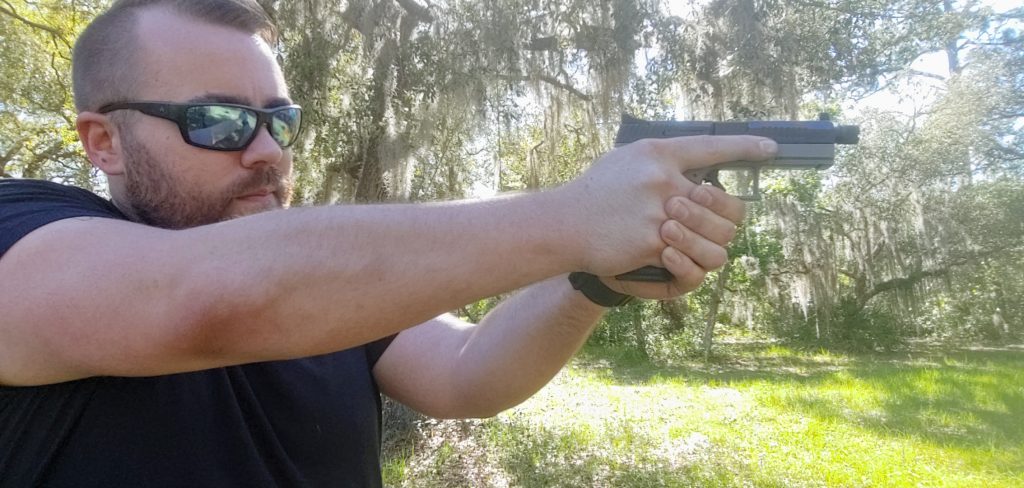
Cons
- Recoil mitigation is not as good as other methods
- Spinning to a non-dominant side is difficult due to foot placement.
- Largely out of style with pros because you present an unarmored portion of the body
Chapman Stance
The Chapman Stance is a modified Weaver Stance designed by competitive shooter Ray Chapman. The differences here are slight but important. The firing arm is fully extended and locked out, and the support hand is bent slightly less and facing downwards.
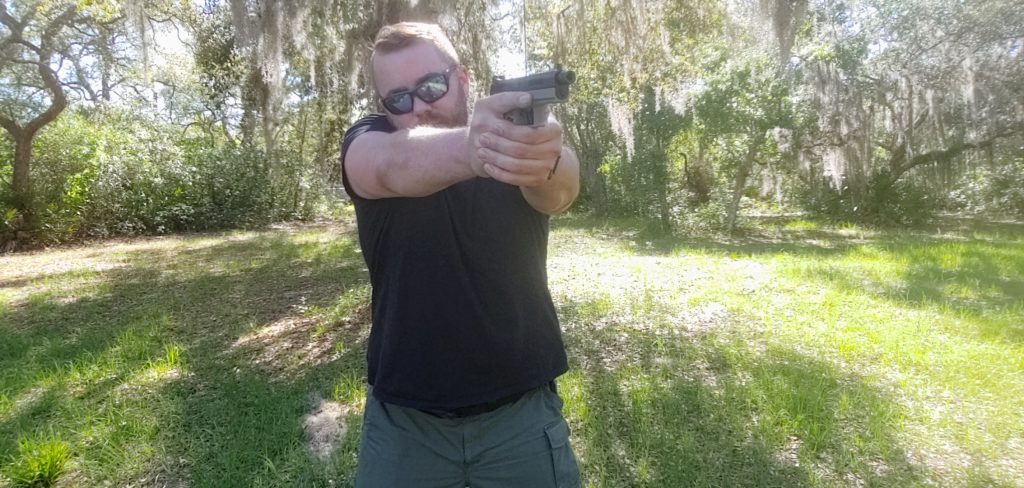
With the shooting arm fully extended you can rest your cheek on your bicep to acquire a steady sight picture. Your legs are slightly different. The front leg is pulled slightly closer into the other foot. This keeps things stable and keeps the shooter tight and quick to move.
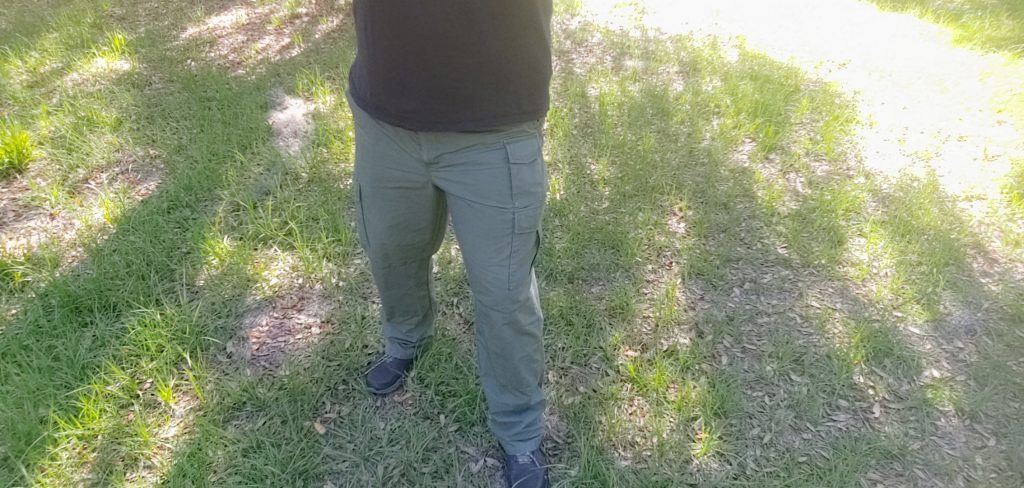
Pros
- Easier to control recoil with the locked out arm
- Comfortable and easy to learn
- Bladed body is a smaller target.
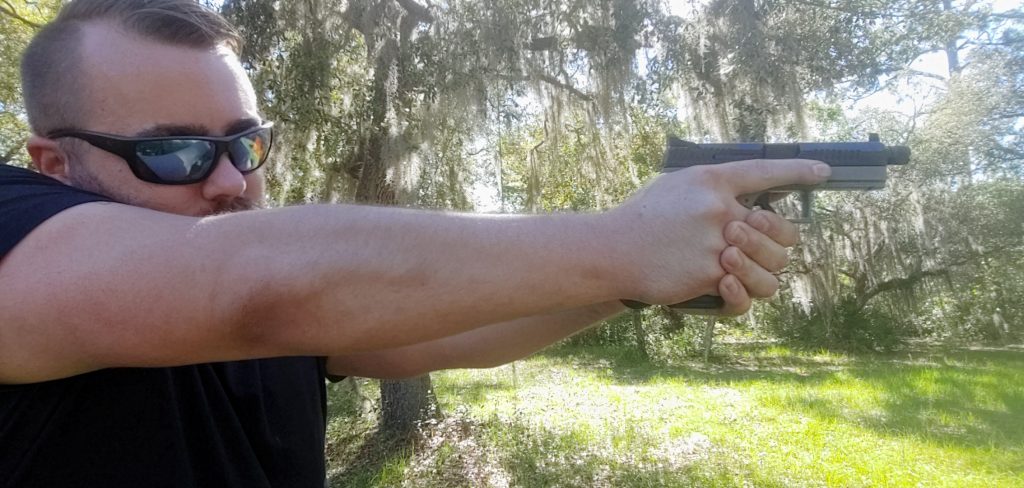
Cons
- Harder to hold than the Weaver for extended periods
- Can be straining
- Still difficult to move quickly to the non-dominant side.
Isosceles Shooting Stance
Isosceles is the most stable position out there and lends itself well to modern tactical shooting. it’s simple and easy to learn but feels awkward at first. For Isocelese stance you square up to the target and position your legs shoulder width apart and both arms are forward and locked out.
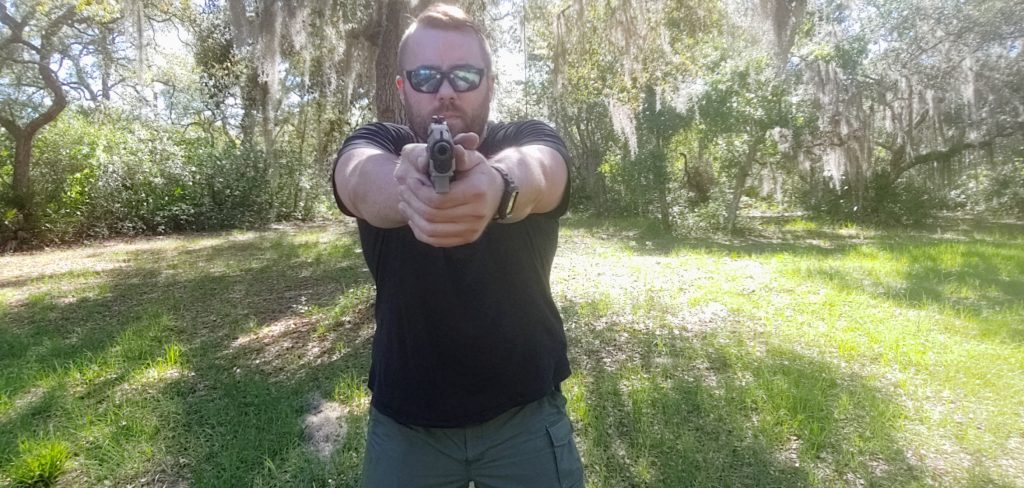
You are forming a triangle with your upper body. The bend slightly at the waist and bend the knees slightly. The isosceles offers a lot, but most of all it offers shooters who wear body armor the most coverage possible.
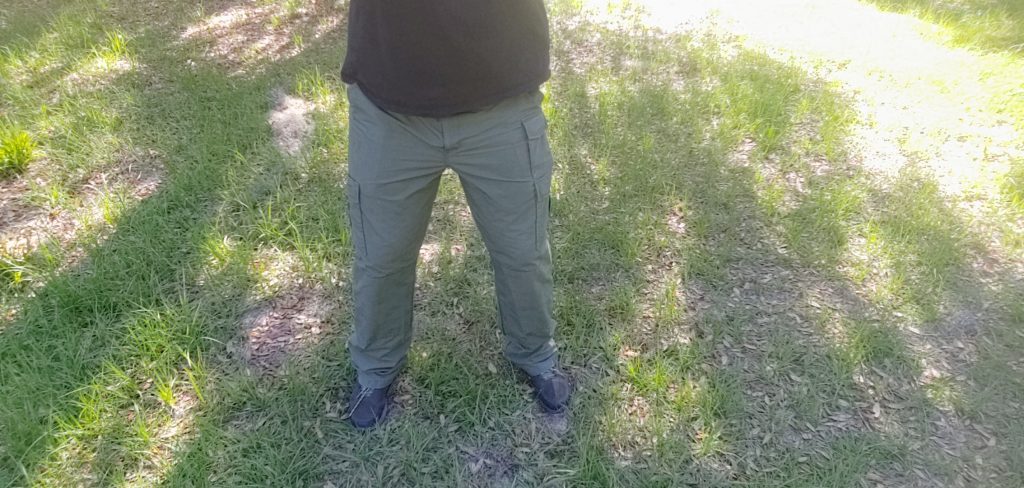
Pros
- Easy to learn
- Offers the best recoil control
- Quick and easy to transition left and right
- Easy to explode off the X in any direction
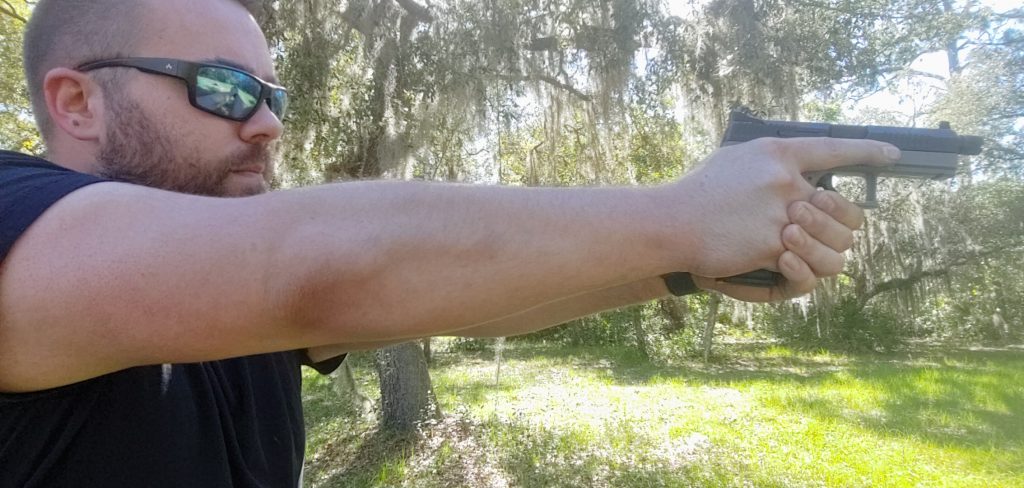
Cons
- Uncomfortable at first, feels awkward
- Arms tire after a day of shooting in this position, difficult to hold someone at gunpoint for an extended period.
- Non bladed stance gives your opponent a bigger target.
Shooting Stances
Choosing the right shooting stance for you is a matter of getting out there and shooting and most importantly training. I use the Chapman quite a bit due to a shoulder injury in my left arm, even though I’m trained in the isosceles. The current pros mostly use isosceles but as anyone worth their spit would tell you there is no right answer for everyone. I change my stance a bit between guns. For heavy duty revolvers, I use the weaver because it helps balance weight, for my Poly 80 lower receiver Glock I use isosceles.
Get out there, shoot in a variety of shooting stances and figure out which one allows you to shoot the target quickly, accurately and over and over.
About the Author:
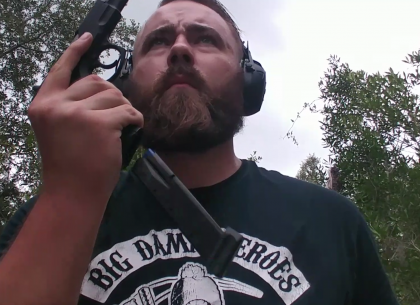
Travis Pike is a former Marine Machine gunner who served with 2nd Bn 2nd Marines for 5 years. He deployed in 2009 to Afghanistan and again in 2011 with the 22nd MEU(SOC) during a record-setting 11 months at sea. Travis has trained with the Romanian Army, the Spanish Marines, the Emirate Marines, and the Afghan National Army.
He serves as an NRA certified pistol instructor and pursues a variety of firearms based hobbies.

